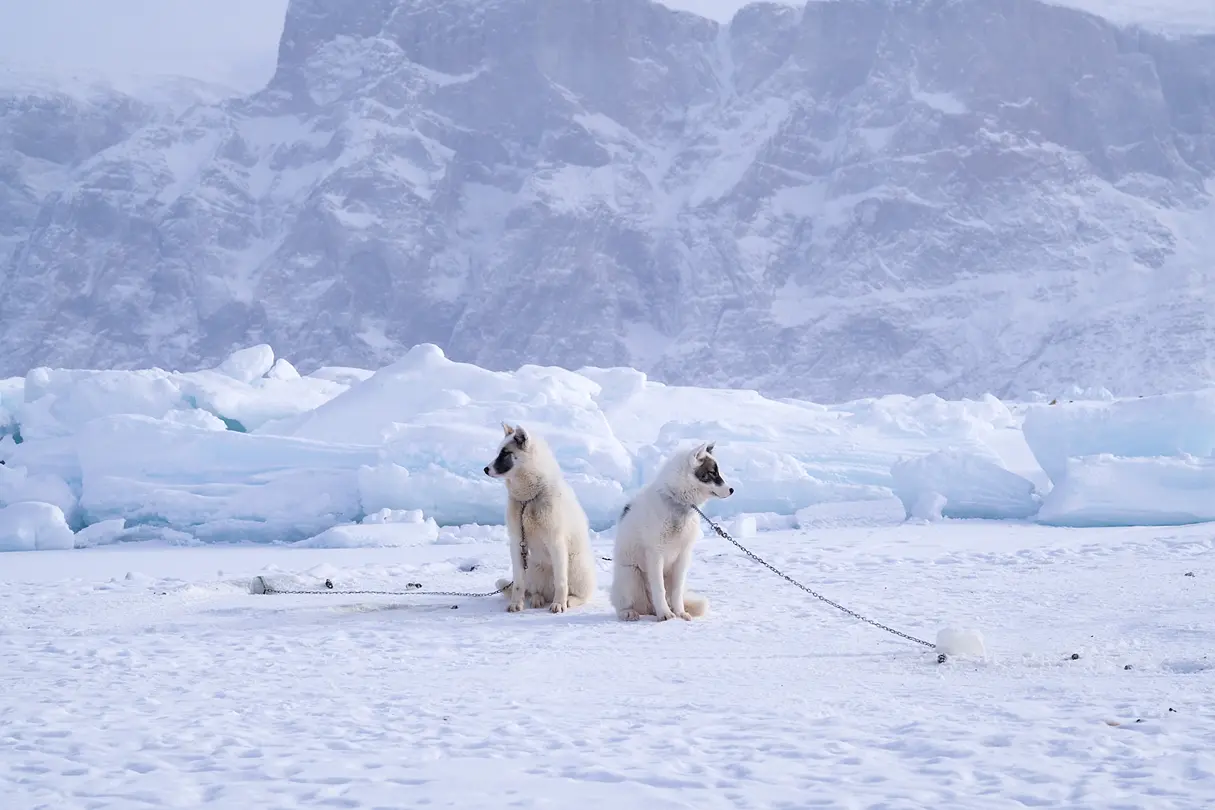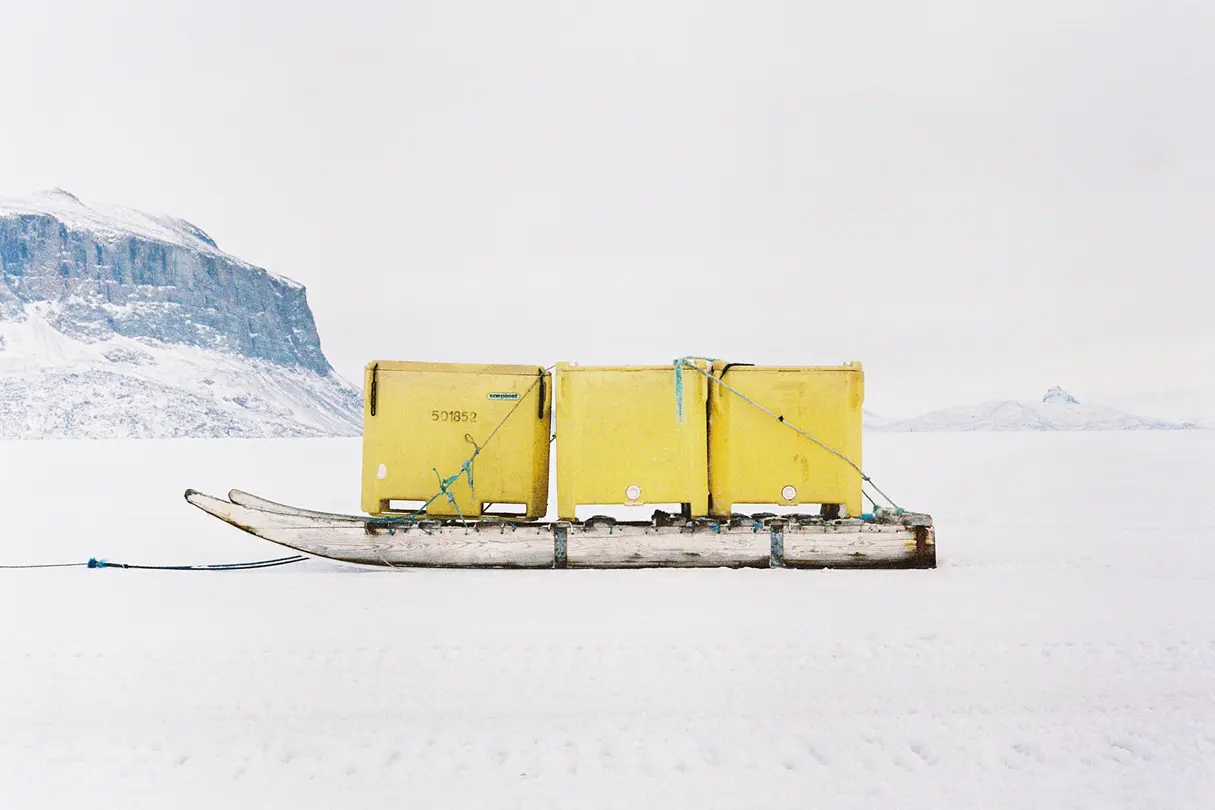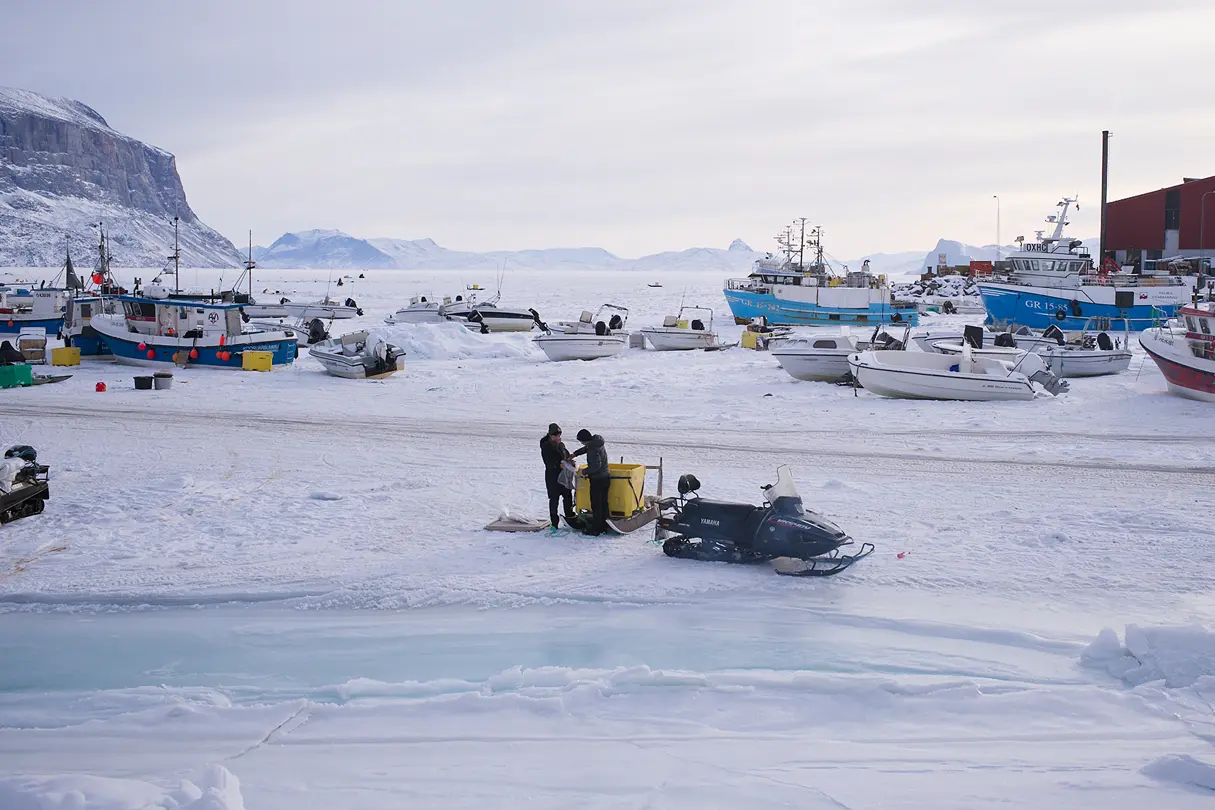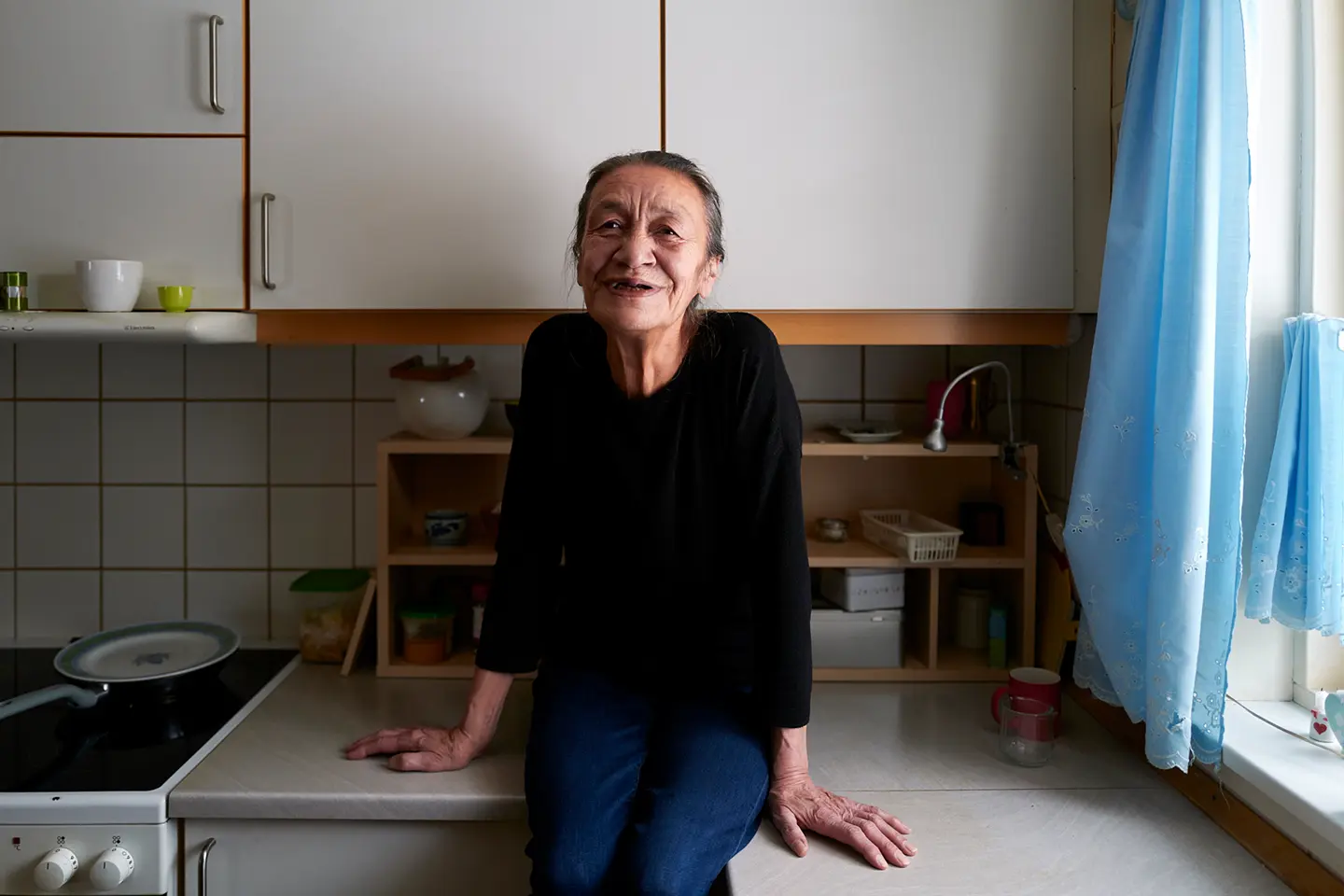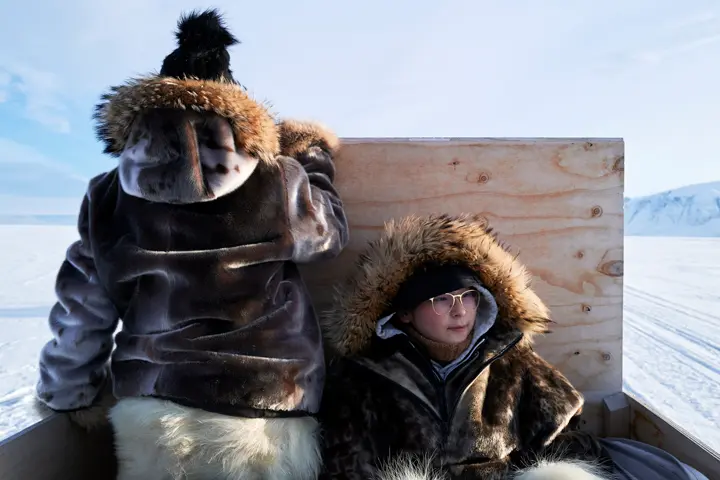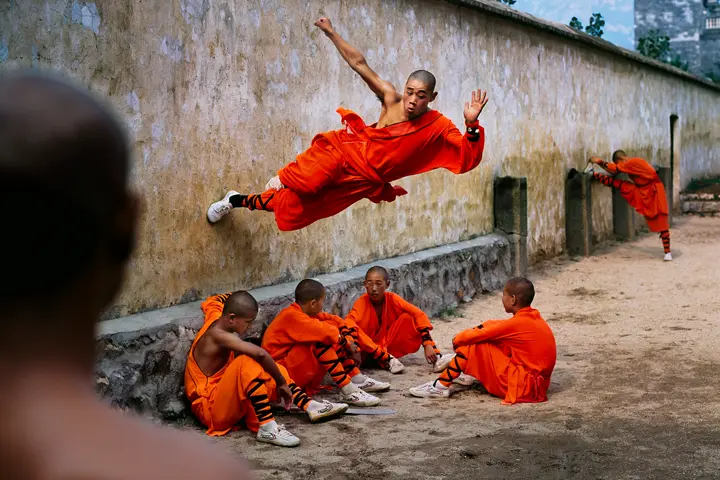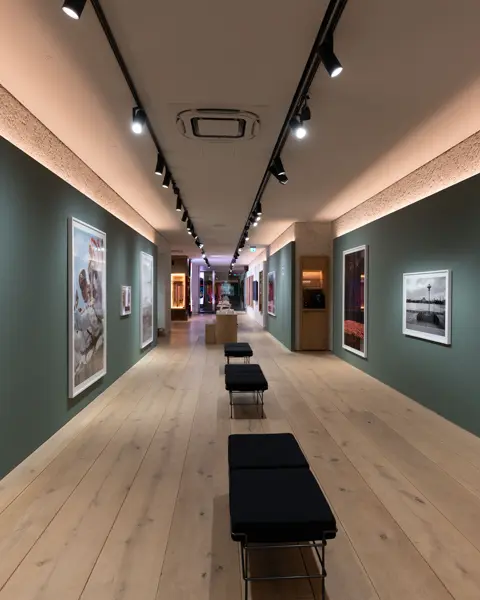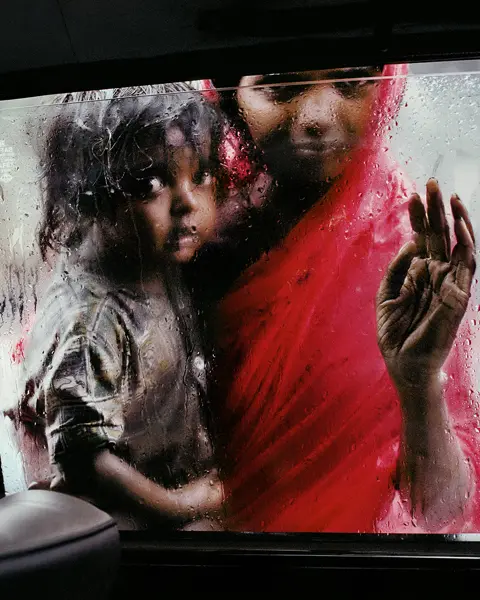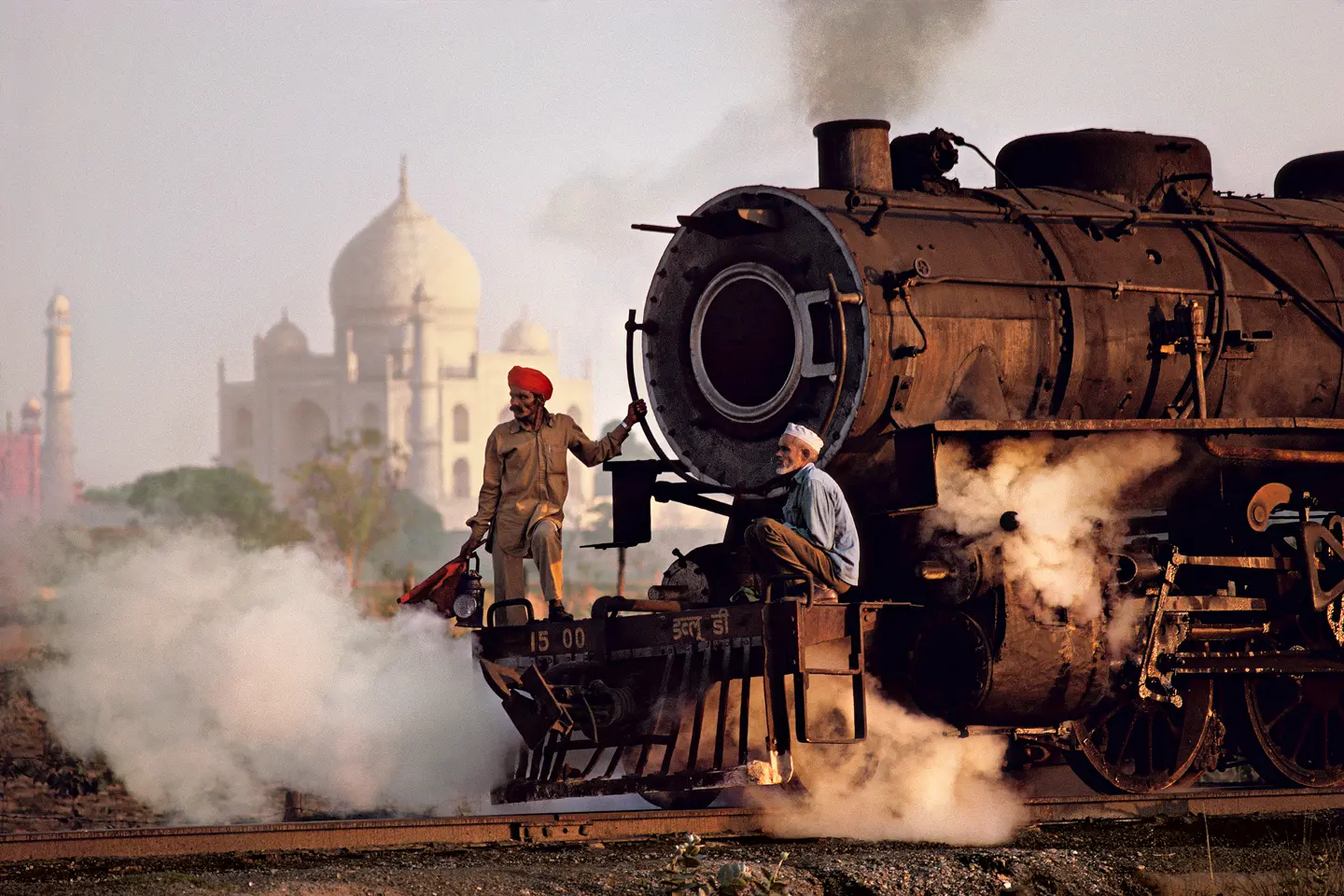
In Conversation: Jessie Brinkman Evans and Steve McCurry
A further inspiring juxtaposition forms part of the Leica I centennial celebrations. The works of Jessie Brinkman Evans engage in a photographic dialogue with those of Steve McCurry at the Leica Gallery Melbourne. McCurry is known for his vivid portraits, which are characterised by their extraordinary lighting and profound humanity. Brinkman Evans also plays with light and colour, aesthetically orchestrating the interplay between humans and nature. Her works conjure up contrasts between culture and life's purpose.
Jessie Brinkman Evans I Steve McCurry

100 years of Leica photography: what are your thoughts on this?
I think a large part of this success is a result of Leica’s steadfast commitment to photographers, through impeccably crafted precision instruments and the company’s appreciation for the art of documenting life in all its facets. There is something magical about the simplicity and power of these tools, which make it possible for me to stay creative and flexible while working with equipment that helps me convey my vision.
How has the work of LHOF winners influenced your work?
I remember studying the work of Steve McCurry for the first time when I was in my late teens, so it’s surreal to write about it now. Besides the obvious beauty of the composition, light and colour, his works are inherently able to document our human coexistence. This ability connects us all in a way that can only arise from true curiosity about culture, language, and the human experience. While finding my own way as a photographer, this was a constant source of inspiration and a reminder that image composition is a dance – between the people or landscape in front of me and the light that surrounds them.
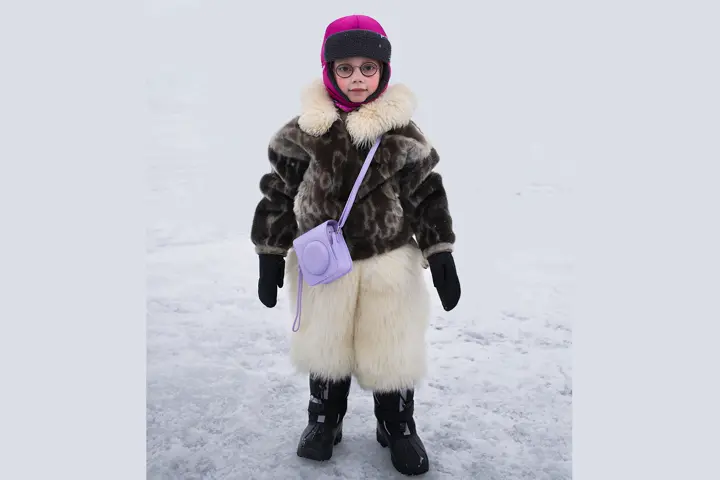
Jessie Brinkman Evans
What is the subject matter/theme of your photographs that are being displayed in the exhibition?
The subject matter of my exhibited photographs shows the contrast between culture and life purpose, and how this interplay can shape a person. A special image shows a young Faeroese girl wearing a Greenlandic girl’s clothing: aside from the universal experience of childhood, the picture highlights cultural parallels and exchange. It overrides the notion of the “other”, which often resonates in similar images.
Which camera did you use for your photography and why?
For this project, I used the Leica M11, M6, and Q2. In the Arctic, for example, life has a particular rhythm that is often dictated by the weather. That’s why I feel drawn to slower-paced work with the rangefinder camera, three lense,s and the Q2. The equipment I chose allowed me to capture still, mindful moments, while at the same time reacting flexibly to spontaneous situations.
Where do you get your inspiration?
I’m particularly inspired by literature and art. I take every opportunity to observe someone interpreting light and emotion in their own unique way. And my mother was always a great source of inspiration for me: her boundless curiosity and her courage have significantly influenced me and brought me where I am today.
Which image from the selection of works by the LHOF award winner do you like most? Can you briefly describe it?
One of my favourite pictures by McCurry is “Mother and Child at Car Window”, Bombay, India, 1993. The separation through the car window, the emotion of the mother, and the innocence of the child bridge the gap between their experience and ours. The water on the window, the mother’s hand, and the glimpse of her eyes through the narrow gap in the window – all this comes together and tells a story that resonates with people all around the world.
Steve McCurry

The exhibitions are about a visual dialogue between two generations. How did you approach this theme?
Even if a generation lies between us as photographers and a lot has changed in the way society approaches photography, I see a common thread at the junction of humanity, culture, and community. It is one of the most important aspects of how we move around in the world and come together across borders and languages.
What are the similarities or differences that become visible in this dialogue?
In this project, I wanted to explore the relationship between culture and place within the Arctic communities in Greenland, with a focus on people whose lives are closely linked to the land. Generally, I put a strong focus on light and space in my photography, in particular on capturing the unique colour tones of the Arctic. Although this colour palette differs from McCurry’s considerably, we are connected by our common curiosity with respect to humanity. I think that we both want to explore how people are interwoven with each other and their surroundings. The common thread of our work is the search for the commonalities between people, and the attempt to capture the core of the human experience through photography.
How do you think photography has changed in recent decades?
Image composition is much more immediate nowadays – very different from when I began my career. This speed also influences how we handle images. In general, we often don’t engage with photographs as fully as we should anymore, perhaps because we consume an enormous flood of images every day.
What opportunities and challenges do you see for the future of photography?
I think photography, just like society in general, will have to continue to grapple with AI technology and its role in image composition. You can already see it in the continued popularity of analogue film and the appreciation expressed by both photographers as well as viewers for the unmistakably human touch that this brings. Because there are things that AI will never be able to recreate, in particular, work that is based on true bonds between people.
What role do galleries play in the age of digital media, and specifically for your work?
I think galleries are just as important as ever. In today’s digital world, we are often flooded with images and therefore lose the ability to encounter them in a meaningful way. When large-format photographs are exhibited in galleries, we can interact with them more intensively again and delve into them. By blocking out the noise from the digital realm, we allow the images to truly touch us.
Steve McCurry


Jessie Brinkman Evans
Jessie Brinkman Evans has her roots in Southern California and Australia and now lives between Melbourne, Australia, and St. John’s, Canada. She is known for her works that focus on the crossroads of culture and life purpose. Most of her work is documentary photography, with particular focus on light and color, from both technical and aesthetic perspectives. She has been documenting the Arctic regularly for some time. In addition, she works as an on-set still photographer. Brinkman Evans presented her first solo show at the No Vacancy Gallery in Melbourne in 2023.
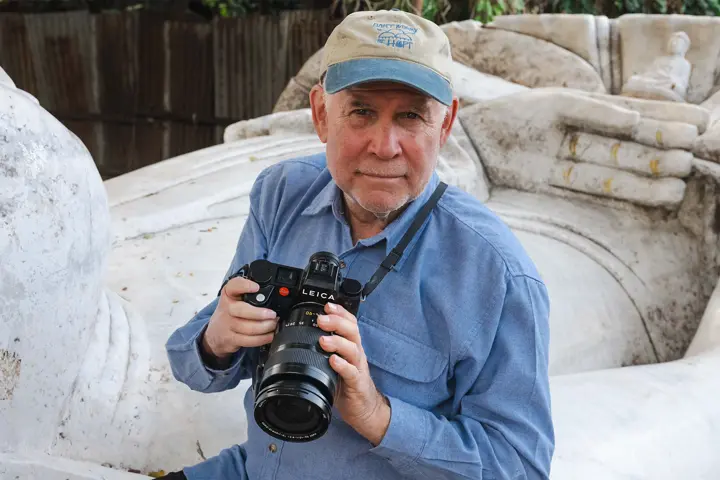
Steve McCurry
Steve McCurry was born in Philadelphia, USA, in 1950 and studied Film and Theatre Arts at Pennsylvania State University. As a photographer and photojournalist, he is above all known for his iconic portrait “Afghan Girl” (1984), which appeared on the cover of National Geographic. He has been a member of the renowned photo agency Magnum since 1986. He has received many accolades for his work. These include finishing in first place during the World Press Photo Contest on four occasions. McCurry has published over 20 books of his works.
